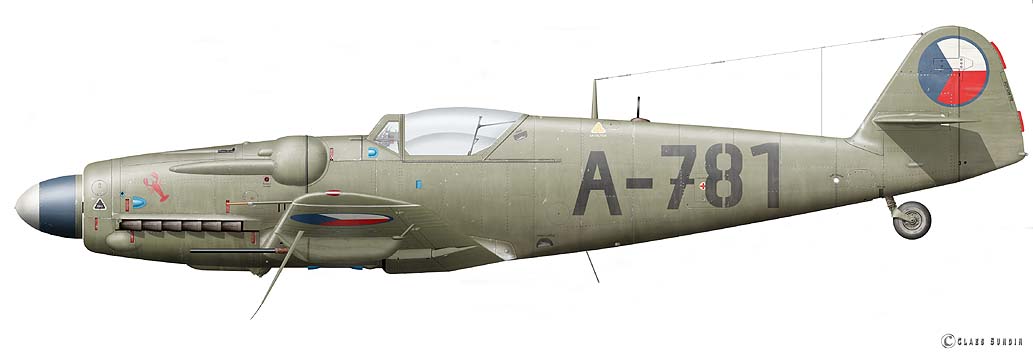



|
During World War ll, Czechoslovakian factories produced many types of armaments for Germany. The Avia factory, a subsidiary company of the wellknown Skoda Works, built aircraft for the Luftwaffe. When the Germans was forced out of Czechoslovakia, they left much manufacturing capacity intact, and Avia continued to build aircraft the Avia S-199 for Czechoslovakia's new air force. The S-199 continued to use the Bf 109G airframe but, with none of the original engines available, an alternative engine had to be used. It was decided that as a replacement for the original engine, the aircraft would use the same (Junkers Jumo 211F) engine and propeller as the Heinkel He 111 bomber. The resulting combination of parts was an aircraft with extremely poor handling qualities. The substitute engine with the propeller lacked the responsiveness of the Daimler-Benz unit and the torque created by the massive paddle-bladed propeller made control very difficult. This, in combination with the 109's narrow-track undercarriage, made landings and takeoffs extremely hazardous. The S-199s maiden flight took place on 24th April, 1947, but the performance and handling of the aircraft left much to be desired.
A final problem lay in the gun synchronizer for the cowl-mounted MG 131 machine guns, which did not work as it was meant to, leading a few Israeli aircraft to shoot off their own propellers. Regarding the service of the S-199 in Israel, In its advance towards independence, the Israelies was very concerned about the power of the Royal Egyptian Air Force. In April 1948, they purcased ten S-199s, including ammunition and relevant equipment and training, for $1.8 million per aircraft, and shortly afterwards a further fifteen aircraft were purchased. As no other combat aircraft
could be acquired by Israel at that time, a most ironic situation
arose. Israel had no option but to purchase the Czech-made Bf
109 which would be flown by pilots of the Israel Air Force who
had fought against the Luftwaffe Bf 109s. The British Spitfire
was one of the most prominent aircraft in the Allied Forces to
fight against the Messerschmitt, and now we had a situation where
pilots in the Israel Air Force flying the Czech-made Bf 109 against
Spitfires of the Royal Egyptian and Royal Jordanian Air Forces.
Indeed an irony of ironies! |
|
|
|
|
|
|